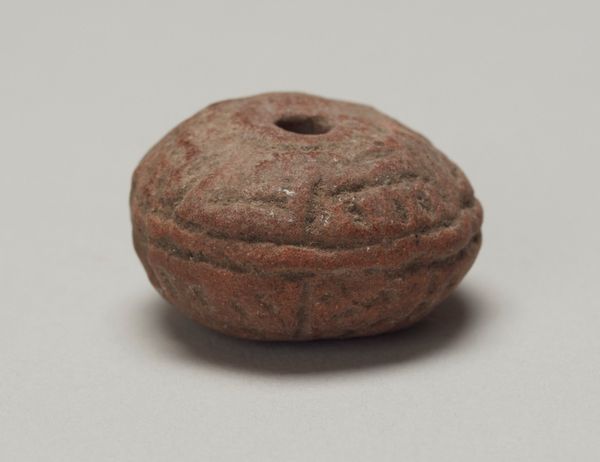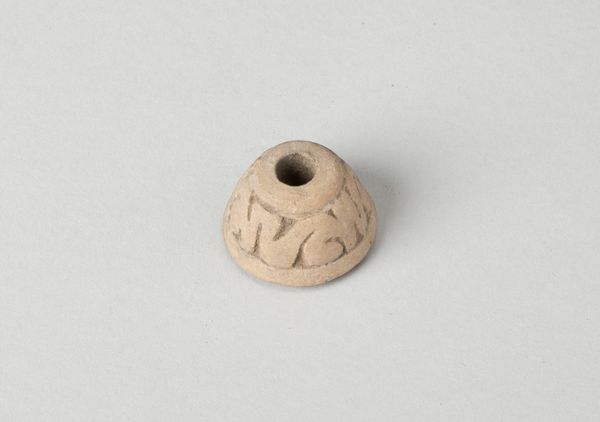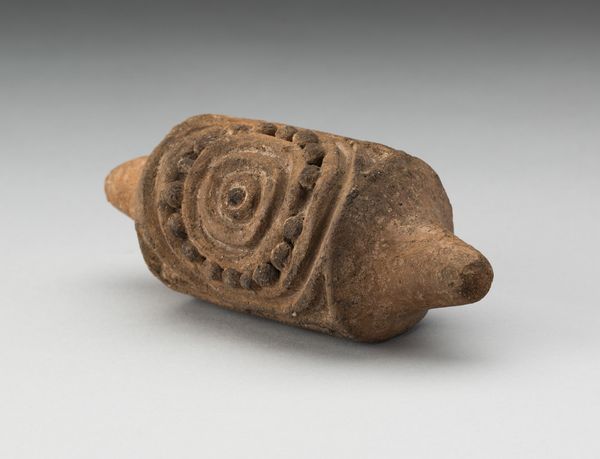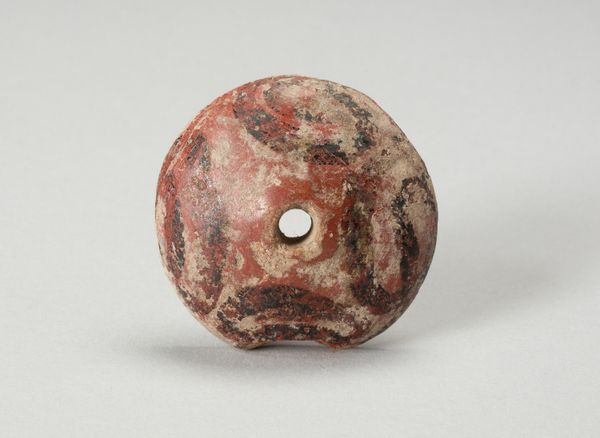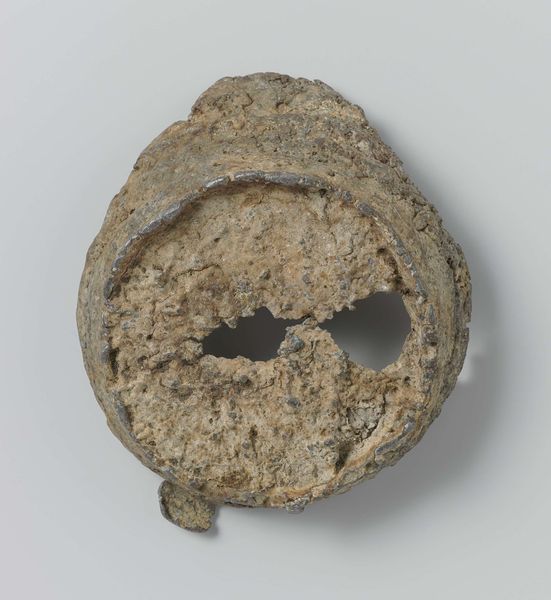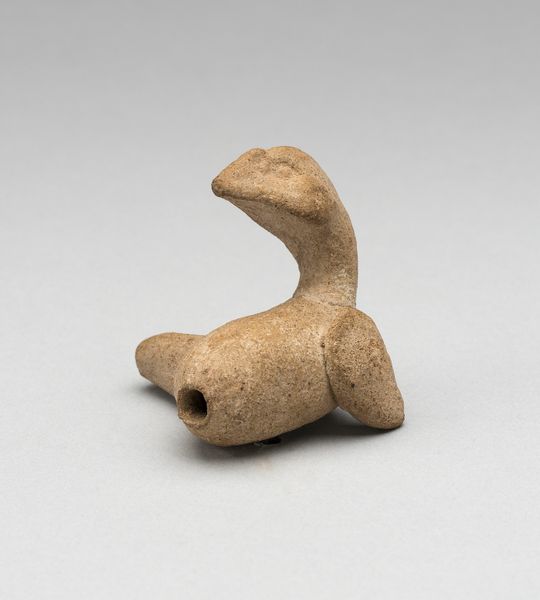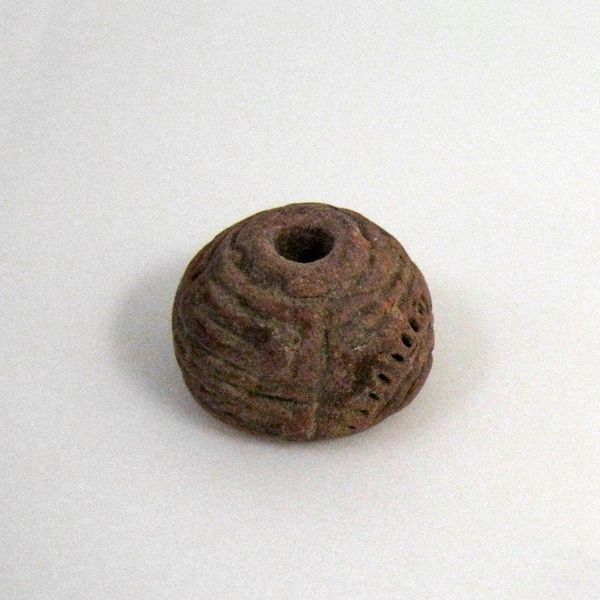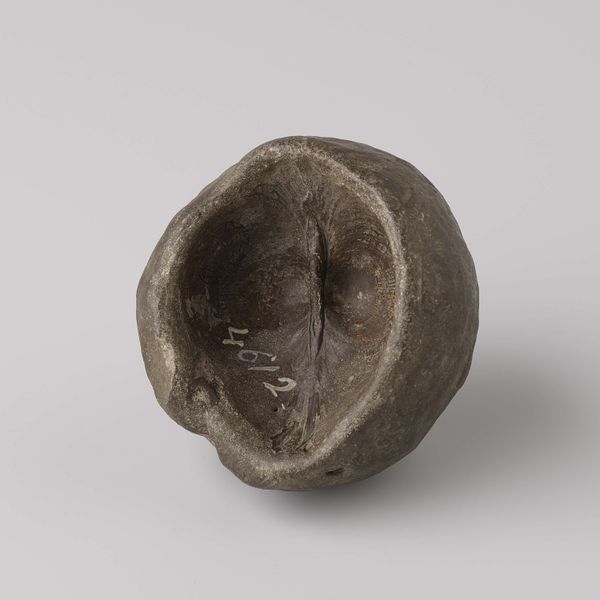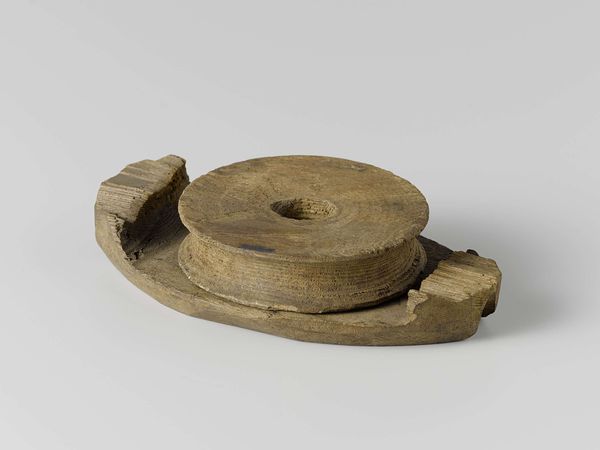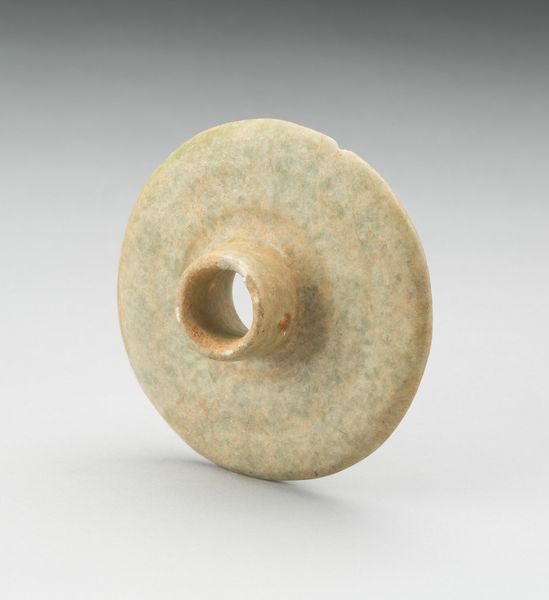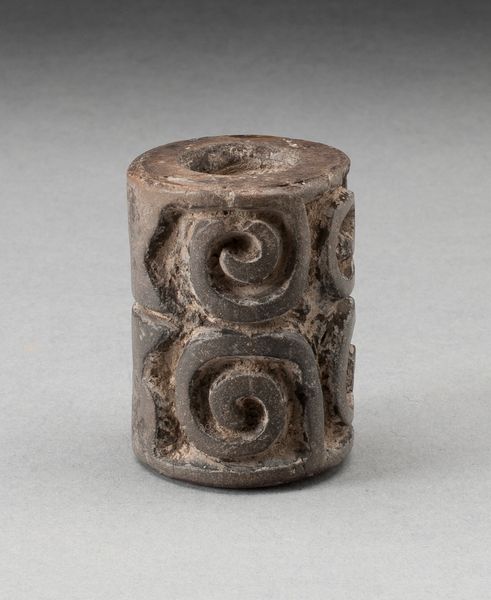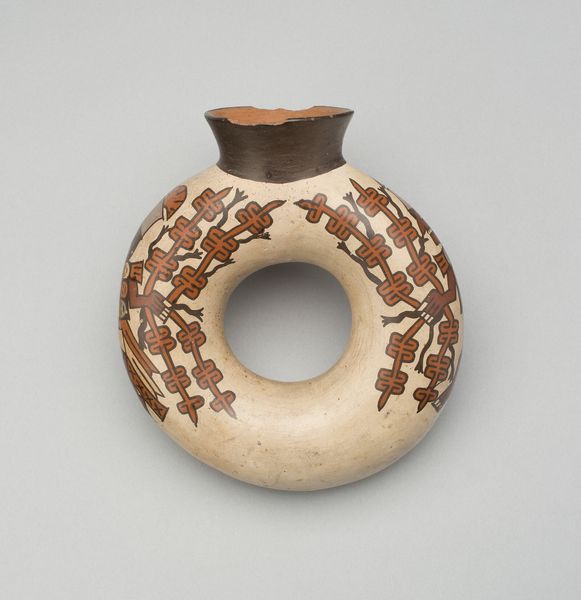
Ear Ornament or Spindle Whorl with Modeled Frog Motifs Possibly 1450 - 1521
0:00
0:00
terracotta
#
sculpture
#
figuration
#
terracotta
#
indigenous-americas
Dimensions: 1 × 3 cm (3/8 × 1 3/16 in.)
Copyright: Public Domain
Editor: So, this piece is a ceramic object, "Ear Ornament or Spindle Whorl with Modeled Frog Motifs," possibly created between 1450 and 1521 by the Aztec culture. The material and form seem really modest, almost utilitarian. I’m curious how you interpret the function of the frogs depicted and its impact on indigenous identity? Curator: That's a perceptive initial read. It’s easy to look at objects like this in isolation, simply admiring their aesthetic qualities. However, this piece exists within a much larger, often violent historical context of colonization. Think about how the Conquista impacted indigenous belief systems. The frog motifs, potentially representing fertility, water, or even transformation, would have held profound cultural significance before the imposition of European values. How might the forced conversion to Christianity and suppression of indigenous practices change how these symbols are understood? Editor: That's fascinating. So, are you saying that its original purpose, to maybe signify the divine or good fortune in daily life, was repressed or even twisted by colonization? Curator: Exactly. Art historians often focus on aesthetics, but as an activist, I think it's crucial to acknowledge how the power dynamics inherent in colonialism affected every aspect of indigenous life, even down to how they understood and interacted with their own symbolic language. When we study the artistic and symbolic expression present on objects like these we must always ask ourselves “Whose voices and experiences are suppressed, overlooked, or erased within mainstream narratives about pre-colonial artifacts?” This then calls us to bring these often suppressed understandings to the forefront. Editor: This has totally changed my perspective. I went in thinking about the artistry of this tiny object, and now I'm thinking about resistance and survival. Curator: And that shift in perspective, recognizing art as embedded in complex historical narratives, is precisely the goal. The power in remembering is key to decolonization, one small step, one ceramic ring, at a time.
Comments
No comments
Be the first to comment and join the conversation on the ultimate creative platform.
